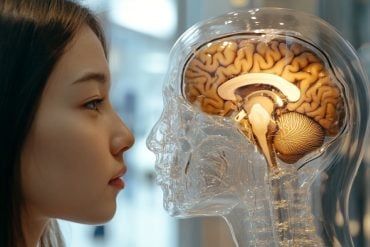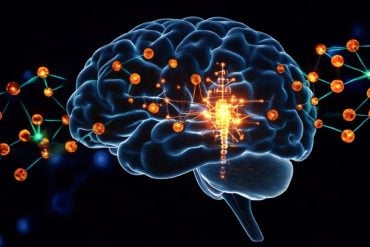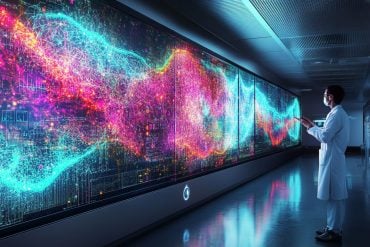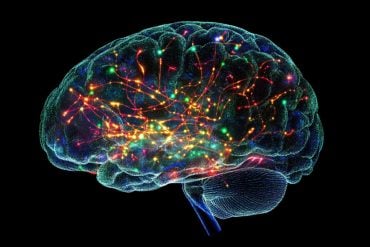Researchers at Radboud University use visual illusions to demonstrate to what extent the brain interprets visual signals. They were surprised to discover that active interpretation occurs early on in signal processing. In other words, we see not only with our eyes, but with our brain, too. Current Biology is publishing these results in the July issue.
The results obtained by the Radboud University researchers are illustrated, for example, by the visual illusion on the left: we see a triangle that in fact is not there. The triangle is only suggested because of the way the ‘Pac-Man’ shapes are positioned; there appears to be a light-grey triangle on top of three black circles.
Seen in the fMRI
How does the brain do that? That was the question Peter Kok and Floris de Lange, from the Donders Institute at Radboud University in Nijmegen, asked themselves. Using fMRI, they discovered that the triangle – although non-existent – activates the primary visual brain cortex. This is the first area in the cortex to deal with a signal from the eyes.

The primary visual brain cortex is normally regarded as the area where eye signals are merely processed, but that has now been refuted by the results Kok and De Lange obtained.
Active interpretation
Recent theories assume that the brain does not simply process or filter external information, but actively interprets it. In the example described above, the brain decides it is more likely that a triangle would be on top of black circles than that three such circles, each with a bite taken out, would by coincidence point in a particular direction. After all, when we look around, we see triangles and circles more often than Pac-Man shapes.
Furthermore, objects very often lie on top of other things; just think of the books and piles of paper on your desk. The imaginary triangle is a feasible explanation for the bites taken out of the circles; the brain ‘understands’ they are ‘merely’ partly covered black circles.
The unexpected requires more processing
Kok and De Lange also noticed that whenever the Pac-Man shapes do not form a triangle, more brain activity is required. In the above image on the right, we see that the three Pac-Man shapes ‘underneath’ the triangle cause little brain activity (coloured blue), but the separate Pac-Man on the right causes more activity. This also fits in with the theory that perception is a question of interpretation: if something is easy to explain, less brain activity is needed to process that information, compared to when something is unexpected or difficult to account for.
Contact: Peter Kok – Radboud University
Source: Radboud University press release
Image Source: The image is adated from the Radboud University press release
Original Research: Abstract for “Shape perception simultaneously up- and down-regulates neural activity in the primary visual cortex” by Peter Kok and Floris P. de Lange in Current Biology. Published online June 26 2014 doi:10.1016/j.cub.2014.05.042






